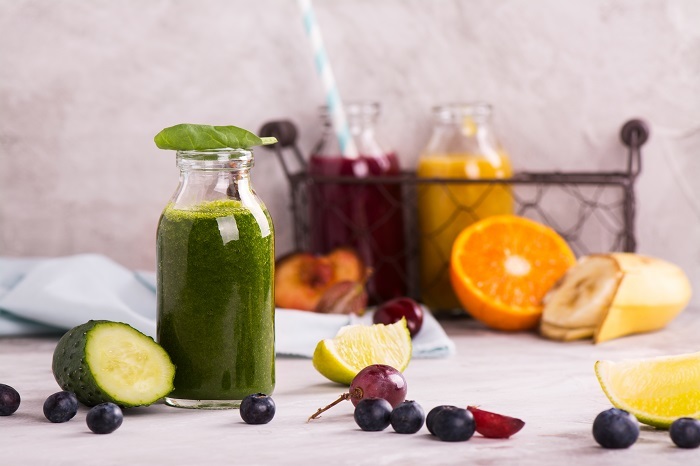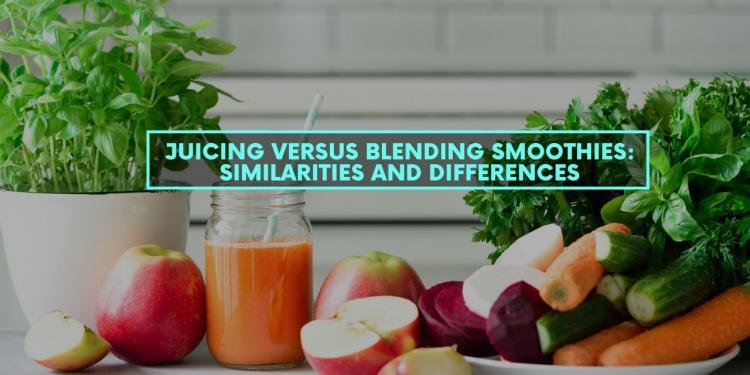When you are cutting weight, raw fruits and veggies are your friends. But you may be looking for other ways to consume them. Juicing and blending is a great way to consume more raw plants. Let’s face it, few of us sit down to raw kale, spinach, and carrot salad every day.
But a juiced or blended fruit and vegetable drink is a far easier and many find a more delicious way of loading yourself with vitamins and minerals, while cutting out non-essential calories. That is why it has become a favorite for some fighters who need to cut weight in the final month before a fight, especially those taking the more vegetarian approach. Jon Jones started juicing when he fought Rampage Jackson. Others blend some fruits, vegetables, and some protein into a shake and drink up.
So to juice or to blend. That is the question. First of all, let’s discuss the difference between the two.
When you juice you are discarding all the fibrous part of the fruit and you’ll leave just the liquid. Blending conversely retains the pulp and fiber. On the face of it, the blended fruits and vegetables seem like the best option. However, there are pros and cons to each.
Juicing
Juicing does have many benefits. Juices contain high concentrations of vitamins and minerals which are easily absorbed. This is because most of the vitamins are found in the juice and not the pulp and fibrous material. On the downside, they also contain a high concentration of sugar and lack fiber.

However, not all juicers are equal. To make juice you can use a fast or a slow juicer. You can think of a slow juicer as midway between a fast juicer and a blender. In general, a fast juicer is a centrifugal juicer. They work by using a flat cutting blade that sits at the bottom of a strainer that spins rapidly. Once the fruit and vegetables are cut, they are pushed through a strainer by centrifugal force. Suction forces the pulp through fine holes separating the juice and pulp.
A slow juicer works somewhat differently. Slow juicers are also known as masticating juicers or cold-press juicers. They are vertical juicers that work by grinding the fibers against augers or screws. The pressure is then used to push the pulp through a filter.
Slow juicers have several benefits of fast juicers over fast juicers. A masticating slow juicer grinds the seeds, pith, skin, and fibers of the produce more fully. You will, therefore, get a juicer that is better able to grind and release the “sticky” nutrients found in the plant cells and membranes.
A juice that contains more ground- up pulp is thought to contain far more nutrients. It’s often claimed that juices are not a great choice for dieters. But the juice from the slow juicer is a better choice as it contains more of the pulp. You’ll also notice that juice from your slow juicers is richer and more colorful. A slow juicer can also juice grasses effectively where a fast juicer will fail. Likewise, you can’t successfully juice all fruits and vegetables, especially not with a fast juicer.

Blending
Blending fruits and vegetables while not as high in concentration in vitamins and minerals is considered by many to be better. In terms of weight loss, when you drink blended fruits and veggies you consume the whole fruit and, therefore, get the fiber too.
Fiber, as we all know, is paramount for digestion. When you are looking to lose weight, a blended fruit and vegetable drink will help you feel much fuller. Juices, on the other hand, need to be consumed in moderation when you are losing weight as they can be high in sugars.
In terms of overall health, it's been found that also in the pulp of fruits and vegetables are phytochemicals which are antioxidants that are considered to have anti-cancer properties.
On the downside to blending fruits and vegetables is that while great for adults, they are not necessarily best for kids. Blended fruits and veg can be filling and kids need energy in spades. Many would indeed consider a blended juice drink to be nutritionally superior. However, there is no nutritional content in a drink your kids won’t drink. Kids may find the bits and blended pulp to be unpalatable. So if your kids can’t handle bits, then it’s best to make them lots of nutrient-packed juices instead.
If you want to consume wheatgrass juice, the best method is a masticating slow juicer. You can blend wheatgrass but you need to add water to the blender. You’ll then need to pass the mixture through a cloth to separate the nutrient-packed juice.
Our blender of choice is...
Blending Smoothies Versus Juicing: What's More Expensive?
If you are looking to adopt juicing or smoothies as a long-term dietary habit, then you are probably interested in the costs associated with both in the immediate and long-term.
The immediate cost is obviously the equipment itself. On the whole, juicers and blenders are going to be around the same price if you are looking for middle-of-the-road quality. A good juicer and blender can be found for less than $100. However, if you are shopping towards the higher-end, juicers will be much more expensive. The most popular blender for smoothie enthusiasts are the Vitamix models, which run anywhere from $200 to $400. However, if you are looking to get a high-end juicer, you can find many that go above $400. The higher-end juicers will tout superior technology to extract the greatest amount of nutrients.
In comparing long-term costs, we can look at how much volume it will give us. Smoothies undoubtedly will give you more volume and therefore be cheaper than juicing. This is because blending doesn't get rid of anything, it just blends it into a smoothie, whereas juicing will only extract the nutrients and discard the rest of the fruit/veggie. So if you are looking for a meal substitute, smoothies will definitely be the way to go as it will fill you up much more cheaply than juicing.
In essence, blending smoothies is cheaper than juicing both in the long-term and is the ideal method for meal replacements.
Comparing Juicing versus Blending
Method | Juicing | Blending |
|---|---|---|
Nutrient Concentration | Higher concentration of vitamins and minerals. | Lower concentration of vitamins and minerals. |
Fiber Content | Pure juice has no fiber. | Blended fruits and veg are packed with fiber. They are great for weight loss as they will fill you up. |
Sugar Content | Juices can be very high in sugar and some are best avoided if you want to lose weight. | Lower sugar content and lower in energy. |
Ease of Digestion | Pure juices don’t contain fiber and are easier to digest. | Not as easy to digest. |
Antioxidants | Juices without pulp don’t contain phytonutrients. | The blended pulp is packed with antioxidants. |
Versatility | Bananas, figs, eggplant, rhubarb, peaches, squash, mangoes, strawberries, and avocado are almost impossible to juice. It can be wasteful to juice expensive berries like raspberries and blueberries. | You can blend any type of fruit and vegetables. You also won't waste any of it. You can blend wheatgrass with water and strain but a slow juicer is best for grasses. |
Best For | Best for kids who need lots of energy and don't like the bits in blended fruit and vegetables. High energy juices are also great for people recuperating who have little appetite. | Blending is best for those wanting to lose weight. Blended fruits and vegetables are more economical and also contain anti-cancer antioxidants. |
Cost | Juicing will be more expensive as it will require more fruits/veggies to fill up the same volume as. While good juicers and blenders can be found for less than $100, a high end juicers will cost you more than a high end blender. | Smoothies are less expensive than juices on an equal volume basis as you are consuming all the ingredients of the fruit/veggie. |




